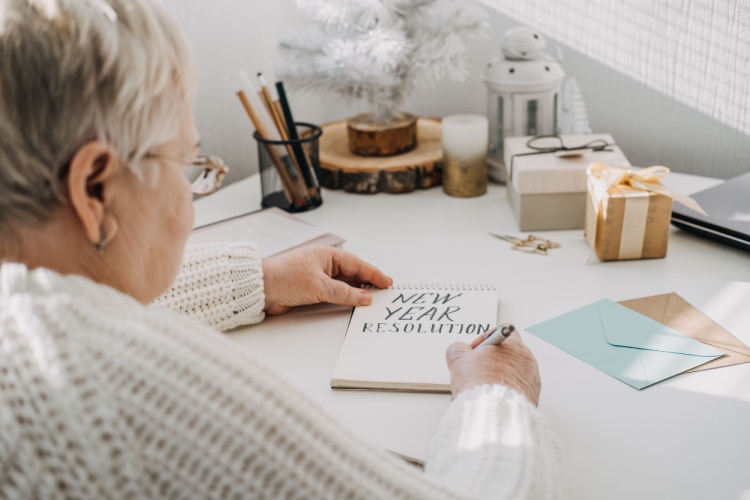Spring is in full swing! The plants are budding, the days are getting longer, and the temperatures are rising. For many, this is the ideal time to spend the afternoons outdoors, soaking up all of nature’s beauty, preparing and planting our gardens, and taking advantage of the longer days. While increased outdoor time also leads to increased sun exposure, it’s important to be intentional about sun safety, specifically regarding our skin. As our body’s largest organ, it’s vital that we protect our skin from damage. Doing so not only helps us to age gracefully, but it also prevents a number of health concerns.
There are many visible changes that happen to our skin as we age. While some of them may only affect our vanity, others can be dangerous to our health, even leading to death if not addressed. We will explore the various changes your skin will undergo as you age, ways to care for your skin, and how to protect it from the hazardous effects of sun exposure.
Wrinkles
To quote Diamond Rio, “Those wrinkles ain’t nothing to be scared of, they’re just a product of time and true love.” In short, they’re inevitable. The loss of elasticity and plumpness, paired with the force of gravity, are to thank for the fine lines and crevasses that make their way across our faces, hands, neck, and other areas. While we cannot prevent them, there are things we can do to help lessen the effects or appearance of wrinkles. Avoiding sun exposure is the #1 way to combat wrinkles. While that’s not always possible, we can limit our exposure by sitting in shaded areas, wearing a wide-brimmed hat, and using sunscreen.
Society has put a great deal of emphasis on the appearance of wrinkles. The rise in cosmetic dermatology alone indicates that we aren’t big fans of this natural aging process. We can poke, prod, nip, and tuck all day long, but at the end of the day, wrinkles are still a part of growing old.
Age Spots/Skin Tags
Both age spots and skin tags are virtually harmless, occasionally becoming irritated, but causing no threat to your overall health. Age spots, formerly known as liver spots, are a result of sun exposure over time. They’re brown spots on the skin, most frequently found on the hands, face, arms, back, and feet. Skin tags are small growths of flesh colored skin. They’re more prevalent among women and are most commonly found in the folds of the skin, including areas such as eyelids, neck, armpits, chest, and groin.
Dry & Itchy Skin
As we age, our body produces fewer natural oils, leaving our skin feeling dry and itchy. Other reasons include dehydration, stress, smoking, and sun exposure, once again. Additionally, a variety of health problems, such as diabetes, kidney disease, and poor circulation can also be contributing factors. While some of these areas are out of our control, staying properly hydrated, moisturizing regularly, and avoiding excess sun exposure are simply ways that we can help ward off dry, itchy skin. When left untreated, greater issues, including infection, can arise.
Bruising
The aging process strikes again! As we get older, our skin becomes thinner and loses some of the protective fatty layer that insulates our blood vessels, making us more susceptible to bruising. Something as simple as rubbing against a piece of furniture can leave a substantial bruise or even cause the fragile skin to pull away and bleed. If you have any concerns regarding your bruising, please reach out to a healthcare professional. Sometimes there is a fine line between bruising caused by the aging process and a bigger health concern that needs to be addressed.
Skin Cancer
The dreaded “C” word!!! Most of the aforementioned skin changes are generally harmless, having a greater effect on our vanity, than our overall health. However, cancer, as we all know too well, can cause far more serious health complications, especially when left undetected. For that reason, conducting regular skin checks, both at home and by a dermatologist, are a vital part of our health. Basal Cell Carcinoma and Squamous Cell are less invasive and slower growing forms of cancer than their counterpart, Melanoma. However, any noted changes or concerns should be brought to the attention of a healthcare provider. The ABCs of Skin Cancer, as follows, are a great way to remember the changes you should be looking for when doing self-checks.
- A- Asymmetry
- B- Border
- C- Color
- D- Diameter
- E- Evolving
In conclusion, to help protect your skin and your overall health, remember to always wear your sunscreen. Make it a part of your daily routine, applying it at least 30 minutes before going outdoors, so your skin is never left unprotected. Wear lightweight, long-sleeved clothes when you will be spending any length of time outdoors. Pack a hat with a wide brim to keep the sun off of your face and your neck. Lastly, limit the length of sun exposure by restricting your time outdoors when the sun is at its peak strength. Opt for early morning or later evenings outdoors, as opposed to the middle of the day. When you are outdoors, seek shaded areas to further protect yourself from the potential threats of the sun’s rays.












